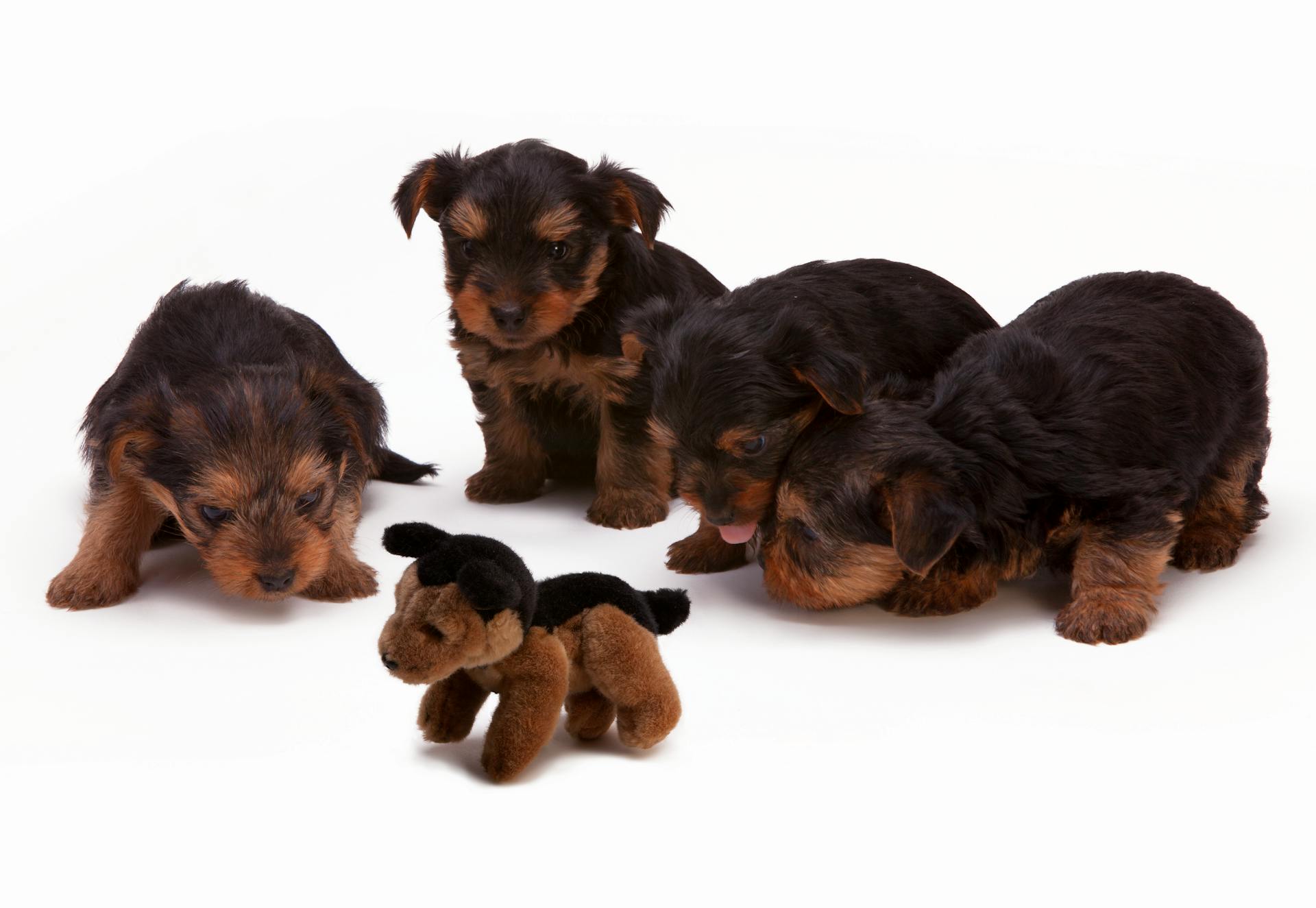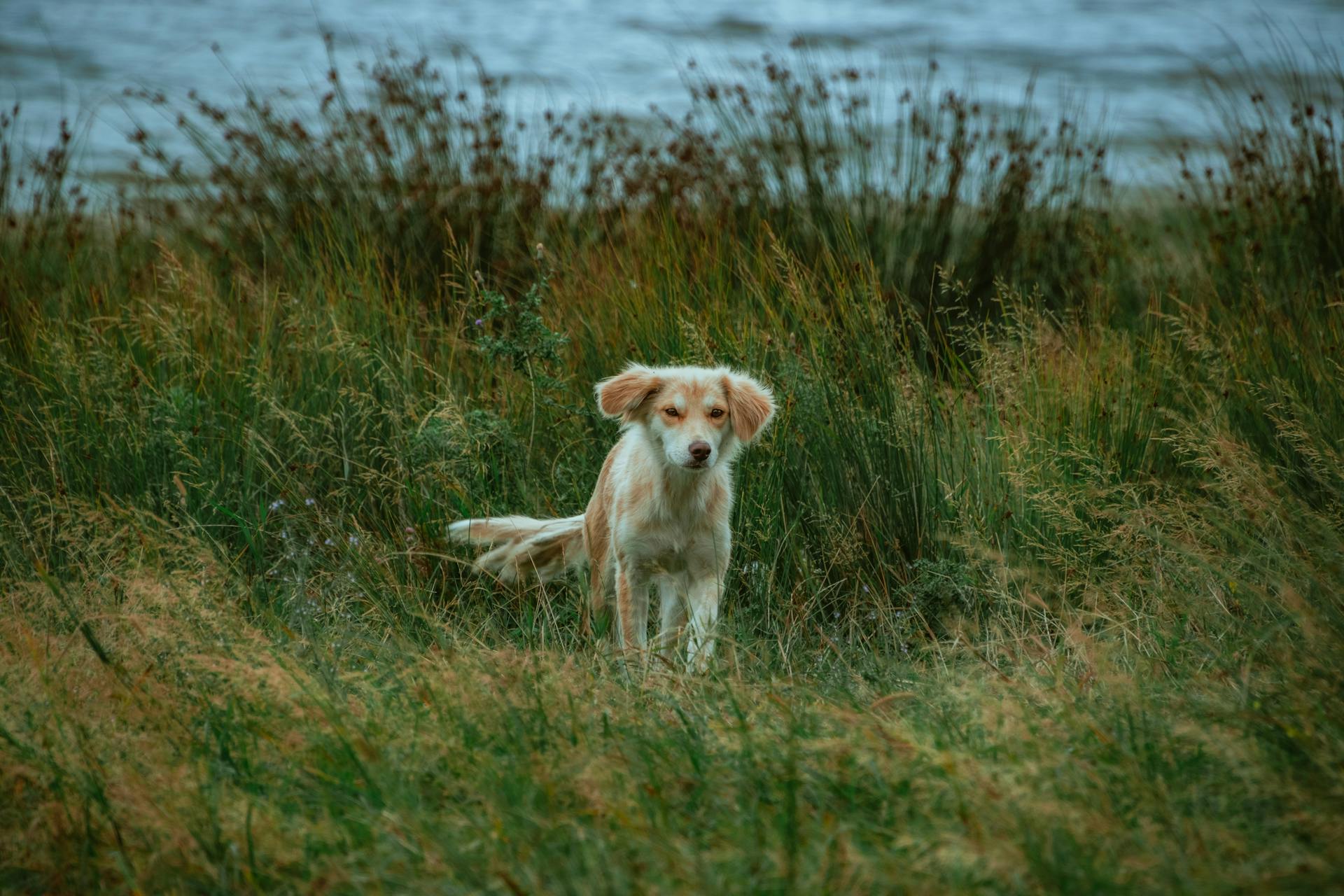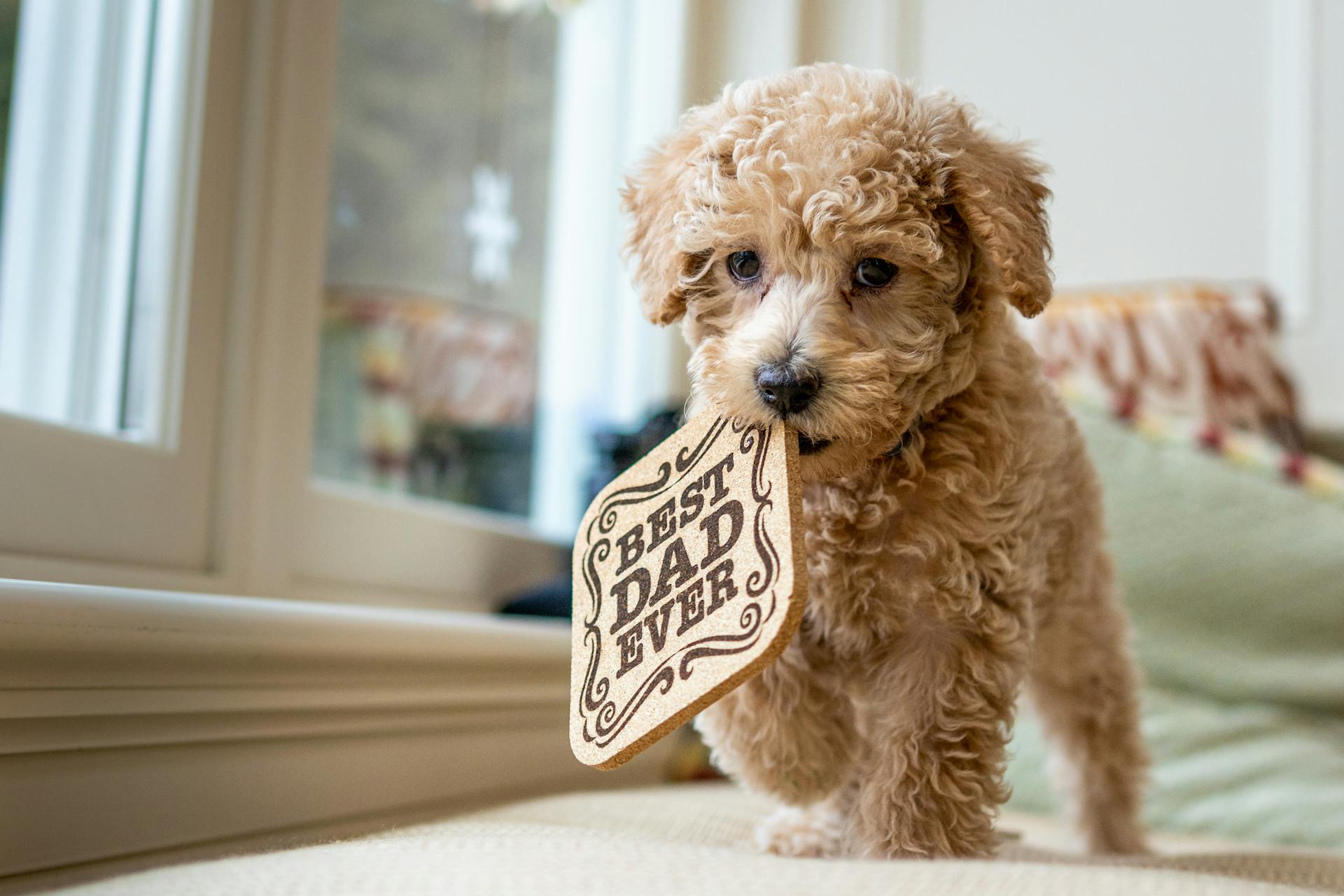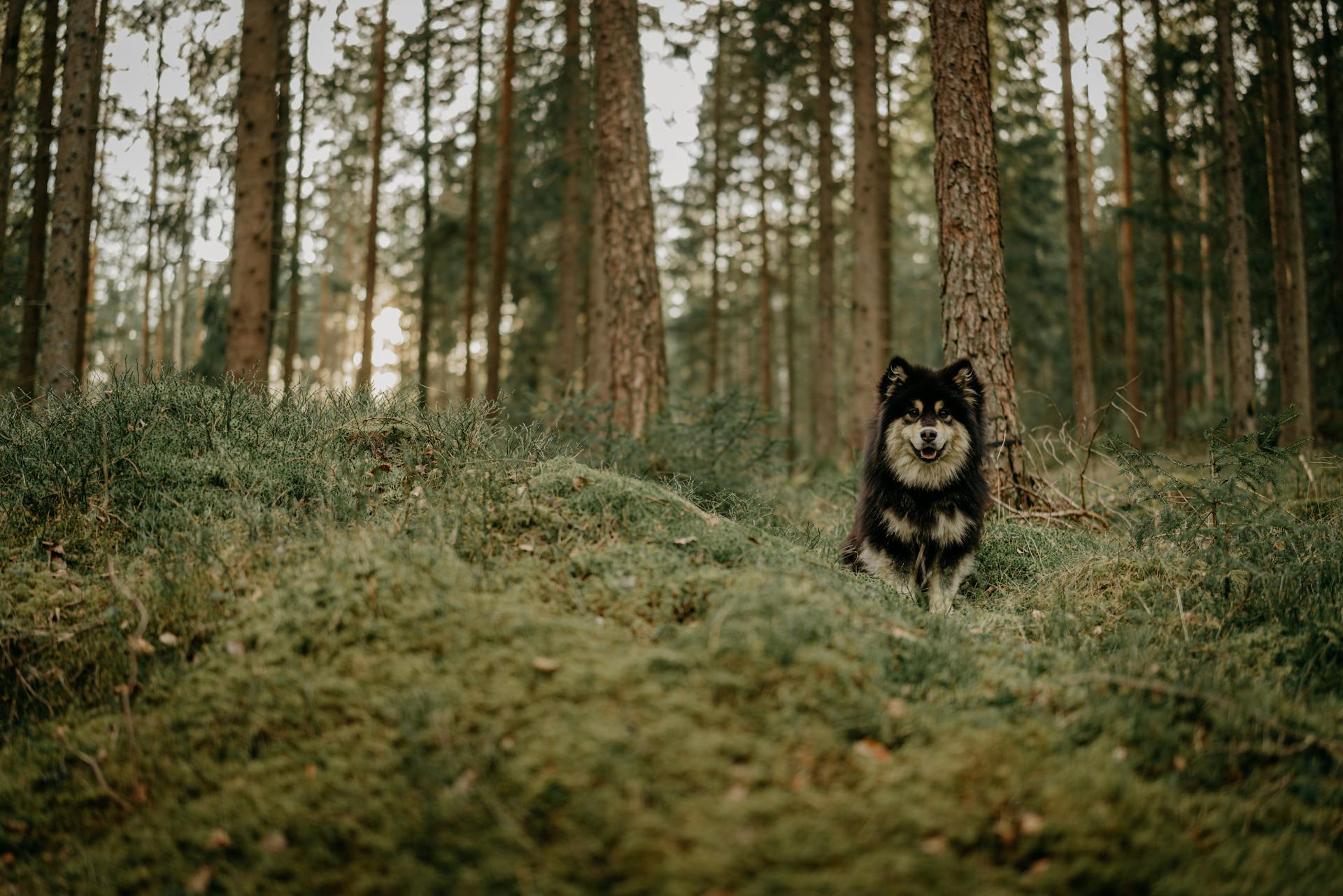
Working with Finnish Lapphund breeders can be a rewarding experience. They often have a strong connection to the breed's history and heritage, which is rooted in the indigenous Sami people of Lapland.
Breeders typically prioritize the health and well-being of their puppies, with many having a strong focus on genetic diversity and reducing inherited health issues.
Physical Characteristics
The Finnish Lapphund is a medium-sized herding dog with a sturdy build, typically weighing between 30-40 pounds and standing 17-20 inches tall at the shoulder.
Their thick, double coat is one of their most distinctive features, with a soft undercoat and a coarse outer coat that sheds heavily.
The Finnish Lapphund's coat can come in a variety of colors, including sable, black, and white.
Size
The Finnish Lapphund is a medium-sized dog with a sturdy build. Males stand 19.25 to 20.5 inches at the shoulder.
Females are slightly smaller, ranging from 17.5 to 18.75 inches.
Coat Color and Grooming
The Finnish Lapphund's coat is a double coat, consisting of a long, coarse outer coat and a soft, thick undercoat. It's a beautiful combination that comes in a variety of colors, including white, black, red, and brown, as well as combinations like black and tan.
Daily brushing is a must to prevent hair from filling the house during shedding seasons. This should be done with a slicker brush and rake to prevent mats and remove dead hair and fur.
The Finnish Lapphund's coat doesn't require cutting, except around the paws. You'll also need to blow dry their coat after bathing to ensure it's dry to the skin.
Regular grooming tasks include checking and wiping their ears weekly and trimming their nails every few weeks.
Personality and Temperament
The Finnish Lapphund is a highly social breed that thrives on companionship, making them a beloved companion in Finland.
They are natural herders with remarkable reflexes and agility, and they instinctively safeguard their flock or family. Their friendly disposition makes them unsuitable as reliable guard dogs.
Finnish Lapphunds are easy to get along with, no matter who you are. They are calm, submissive, and affectionate, always alert and sometimes wary of strangers.
As skilled herders, they're a thinking breed with high intelligence and problem-solving skills. This means they can also bore easily, leading to stubbornness and unwanted behaviors like excessive barking if they don't get the attention they deserve.
If left alone for extended periods of time, Finnish Lapphunds may exhibit undesirable behaviors. Regular companionship and attention are essential to keep them happy and well-behaved.
Here are some key characteristics of the Finnish Lapphund's temperament:
- Calm
- Submissive
- Affectionate
- Alert
- Wary of strangers
Care and Feeding
Finnish Lapphunds require regular exercise and mental stimulation, including daily walks, playtime, and activities like agility or obedience training.
Their thick double coat needs regular brushing to prevent matting and minimize shedding. During seasonal shedding, more frequent grooming may be necessary.
A balanced and nutritious diet is key to maintaining their health and vitality, and owners should work with their veterinarians to determine the best dietary plan and feeding schedule for their individual dogs.
Providing high-quality dog food suitable for their age, size, and activity level is essential, and dividing their daily food portions into two or three meals can help prevent overeating or digestive issues.
Grooming
Finnish Lapphunds require regular brushing to prevent matting and minimize shedding. Their thick double coat needs to be brushed daily, especially during seasonal shedding.
The best way to brush their coat is with a slicker brush and rake to remove dead hair and fur. Daily brushing will prevent hair from filling the house during the spring and fall shedding seasons.
Their coat doesn't require cutting, except around the paws. You'll need to blow dry their coat to ensure they're dry to the skin, which also helps remove dead fluff and provides a clear view of the skin.
Checking and wiping their ears weekly is a must, and trimming their nails every few weeks is also necessary. Brushing their teeth at least once every couple of days is important for their oral health.
Feeding
Feeding your Finnish Lapphund requires a balanced and nutritious diet that suits their needs. You can choose a high-quality dog food appropriate for their age, size, and activity level.
A medium-sized breed like the Finnish Lapphund typically requires moderate food to maintain their health and energy levels. Dividing their daily food portions into two or three meals is recommended to prevent overeating or digestive issues.
Fresh water should be available at all times to keep your dog hydrated. Monitoring your dog's weight and adjusting their food intake as needed is also important to prevent obesity.
As adults, Finnish Lapphunds will only need about 2 cups of food daily between two meals.
Return
Returning home with a Finnish Lapphund puppy can be a thrilling experience, but it's essential to be prepared for the challenges that come with it. Puppies need constant supervision to prevent destructive behavior.
Socializing is critical during this period, and Finnish Lapphunds are known to enthusiastically greet other dogs during walks. They can pick up poor behaviors if not trained properly, so setting boundaries and starting training immediately is crucial.
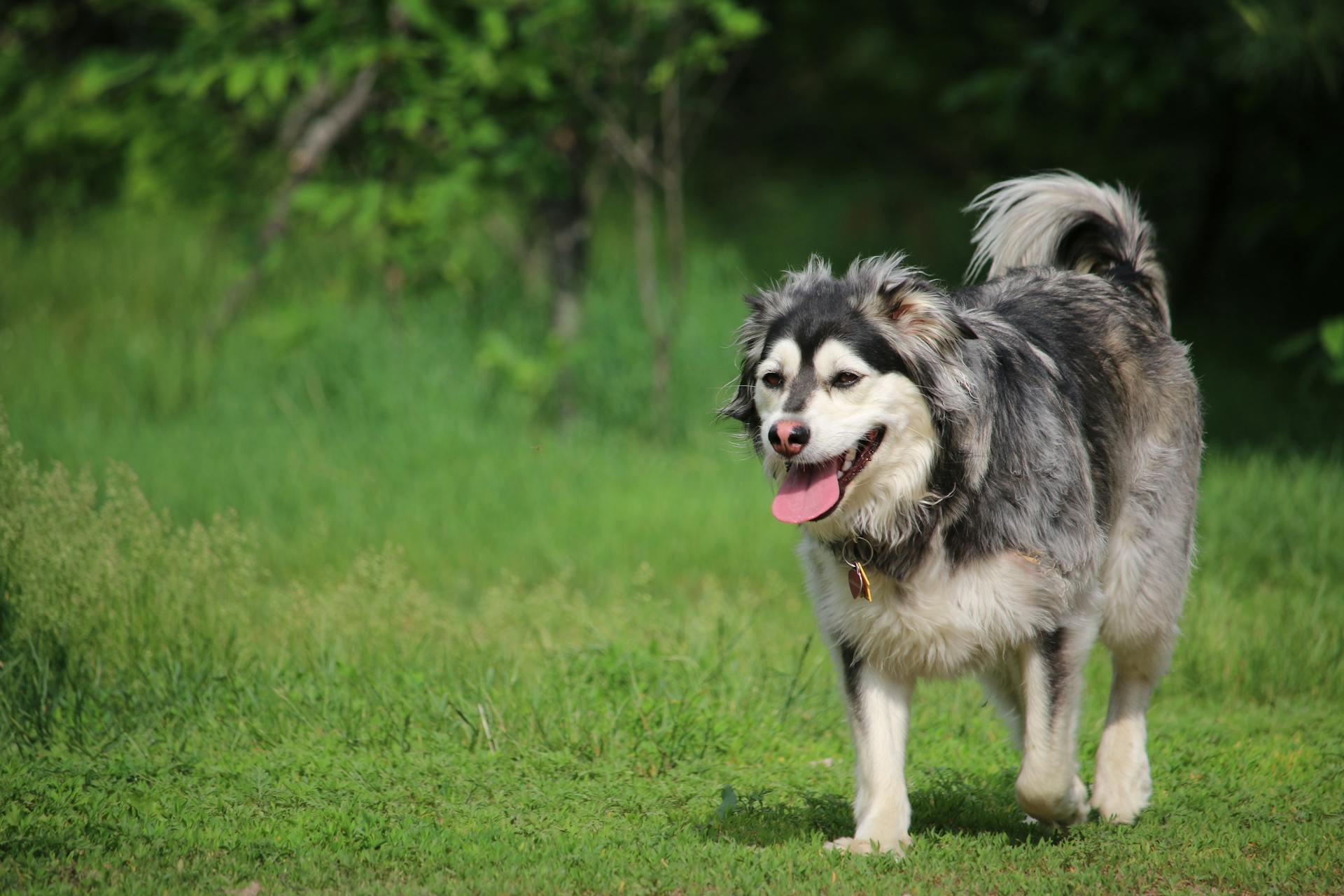
Training a Finnish Lapphund puppy can be tough, especially during adolescence, but patience and consistency will pay off. They will come out the other side as well-adjusted and well-behaved adults if you stick to it.
Finding a reputable breeder can take time, sometimes even over a year, especially since Finnish Lapphunds are relatively new and rare in the US.
Health
Finnish Lapphunds are generally healthy dogs with a lifespan of 12 to 14 years. However, they can be susceptible to certain health conditions.
Some of the most common health concerns in Finnish Lapphunds include hip and elbow dysplasia, which can cause pain and lameness. Eye disorders are also a concern, with Finnish Lapphunds prone to progressive retinal atrophy (PRA), cataracts, and corneal dystrophy.
Breeders should use DNA tests, screening schemes, and inbreeding coefficient calculators to help breed the healthiest dogs possible. This is essential to tackle health issues that may be found in the breed.
Take a look at this: Breeders of Hypoallergenic Dogs
Hip and elbow dysplasia, eye disorders, and Pompe disease are notable conditions to watch for in Finnish Lapphunds. These conditions can be fatal or cause significant pain and discomfort.
Here are some of the specific health conditions to be aware of in Finnish Lapphunds:
- Hip and elbow dysplasia
- Eye disorders (e.g., PRA, multifocal retinopathy)
- Degenerative myelopathy
- Pompe disease
- Hypothyroidism
- Epilepsy
It's essential to ensure that your breeder performs the necessary orthopedic, ophthalmologic, and DNA testing to avoid these issues in your dog. This can help ensure that your Finnish Lapphund lives a long and healthy life.
Exercise and Training
Exercise and Training is a crucial aspect of Finnish Lapphund ownership. Training and socializing your Finnish Lapphund from the outset is essential, as they can be independent and willful without firm yet positive guidance.
Early obedience classes are a great way to get your dog started with developing proper behaviors. Crate training and working on leaving your dog alone can help them adjust to your work schedule and avoid feelings of separation anxiety.
Making recall a training focus will open your dog to all the fun opportunities they desire, like playing at a dog park or participating in organized events. Finnish Lapphunds are incredibly versatile dogs, allowing you to engage their minds and bodies in countless activities.
Exercise Needs
Exercise needs vary depending on age, with adults needing at least 150 minutes of moderate-intensity aerobic activity or 75 minutes of vigorous-intensity aerobic activity per week.
As we age, our muscle mass decreases, and we lose bone density, making it essential to incorporate strength training exercises into our routine.
Children and adolescents need at least 60 minutes of moderate-to-vigorous intensity physical activity per day.
Incorporating high-intensity interval training (HIIT) can be an effective way to improve cardiovascular health and burn calories.
Regular physical activity can help reduce the risk of chronic diseases, such as heart disease and type 2 diabetes.
Aerobic exercises, such as running, cycling, and swimming, can help improve cardiovascular health and increase endurance.
Training
Training is essential for Finnish Lapphunds from the outset, as they can be independent and willful without firm yet positive guidance.
Early obedience classes are an excellent opportunity to accomplish both training and socializing your dog, getting them started with developing proper behaviors.
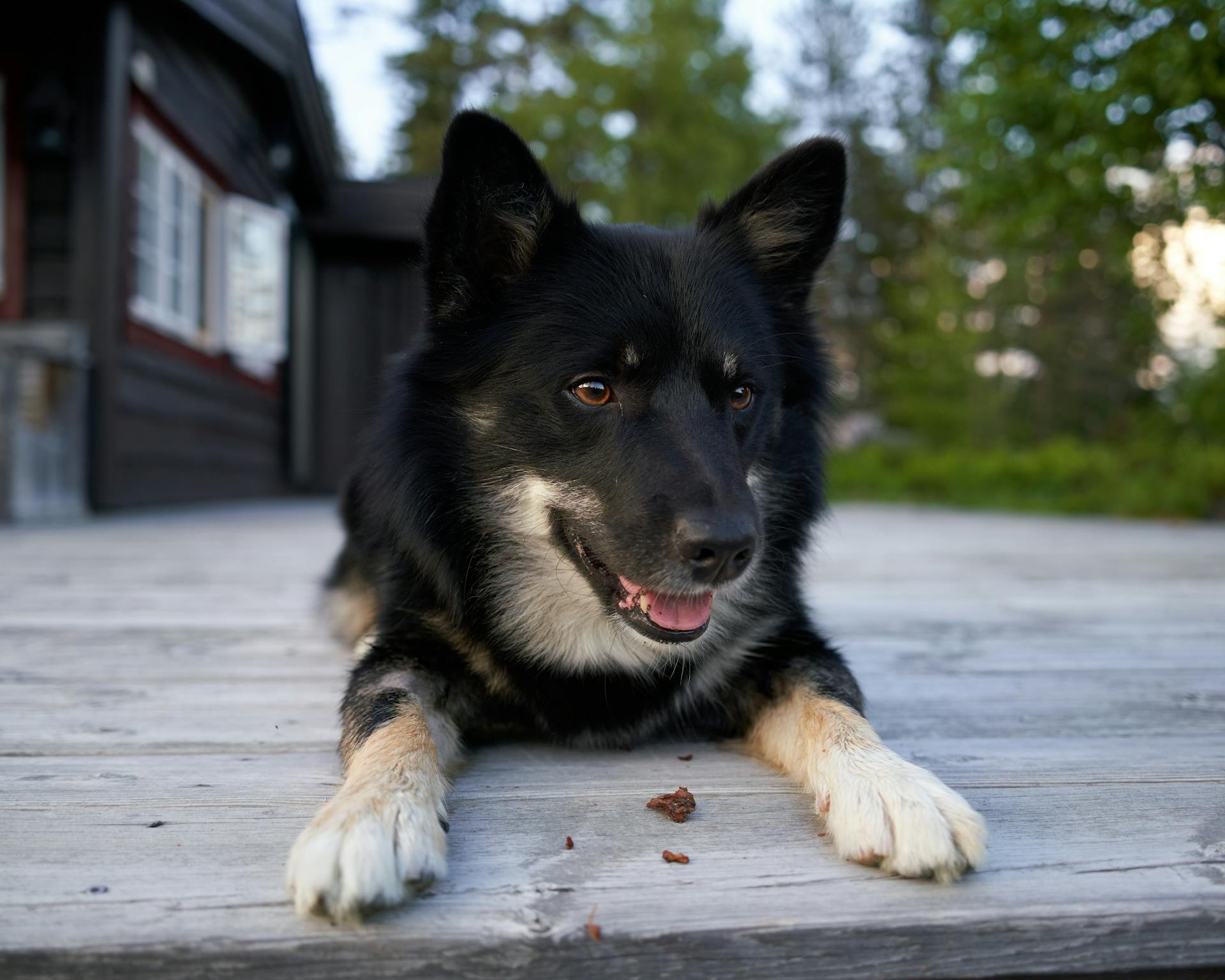
Crate training helps Finnish Lapphunds adjust to your work schedule and avoid feelings of separation anxiety.
Leaving your dog alone can be a challenge, but making recall a training focus will open your dog to all the fun opportunities they desire, like playing at a dog park or participating in organized events.
Finnish Lapphunds are incredibly versatile dogs, allowing you to engage their minds and bodies in countless activities, such as herding trials, agility, and tracking.
Compatibility and Suitability
Finnish Lapphunds love company and make excellent play buddies for other dogs, offering the same consideration they show the rest of the family.
They generally have a gentle nature and are often tolerant of kids, but supervision is crucial when they're around young children to ensure everyone's safety.
If you're considering introducing a Finnish Lapphund to your family, be aware that they have a prey drive and may present challenges with cats and smaller animals, especially if not introduced early.
To ensure a harmonious household, early and slow introductions or raising your pets from a young age will typically engender a friendly, caring dynamic.
Here are some key points to consider when introducing a Finnish Lapphund to your family:
- Early and slow introductions are key to a smooth transition.
- Raising your pets from a young age can help prevent conflicts.
- Supervision is crucial when introducing a Finnish Lapphund to young children.
Pet Compatibility
Finnish Lapphunds can make excellent companions for families with children, but supervision is crucial to ensure everyone's safety.
They generally have a gentle nature and are often tolerant of kids, which makes them a great addition to many families.
However, it's essential to remember that these dogs are still animals and may have their own personalities and quirks.
Finnish Lapphunds love company and are excellent play buddies for other dogs, offering the same consideration they show the rest of the family.
They're social animals and thrive on interaction, which makes them a great fit for families with multiple pets.
Early and slow introductions are key when introducing a Finnish Lapphund to a cat or smaller animal, as their prey drive may cause challenges.
Raising your pets from a young age can typically engender a friendly and caring dynamic between them.
A fresh viewpoint: Great Pyrenees Breeders Nc
Prospective Owners
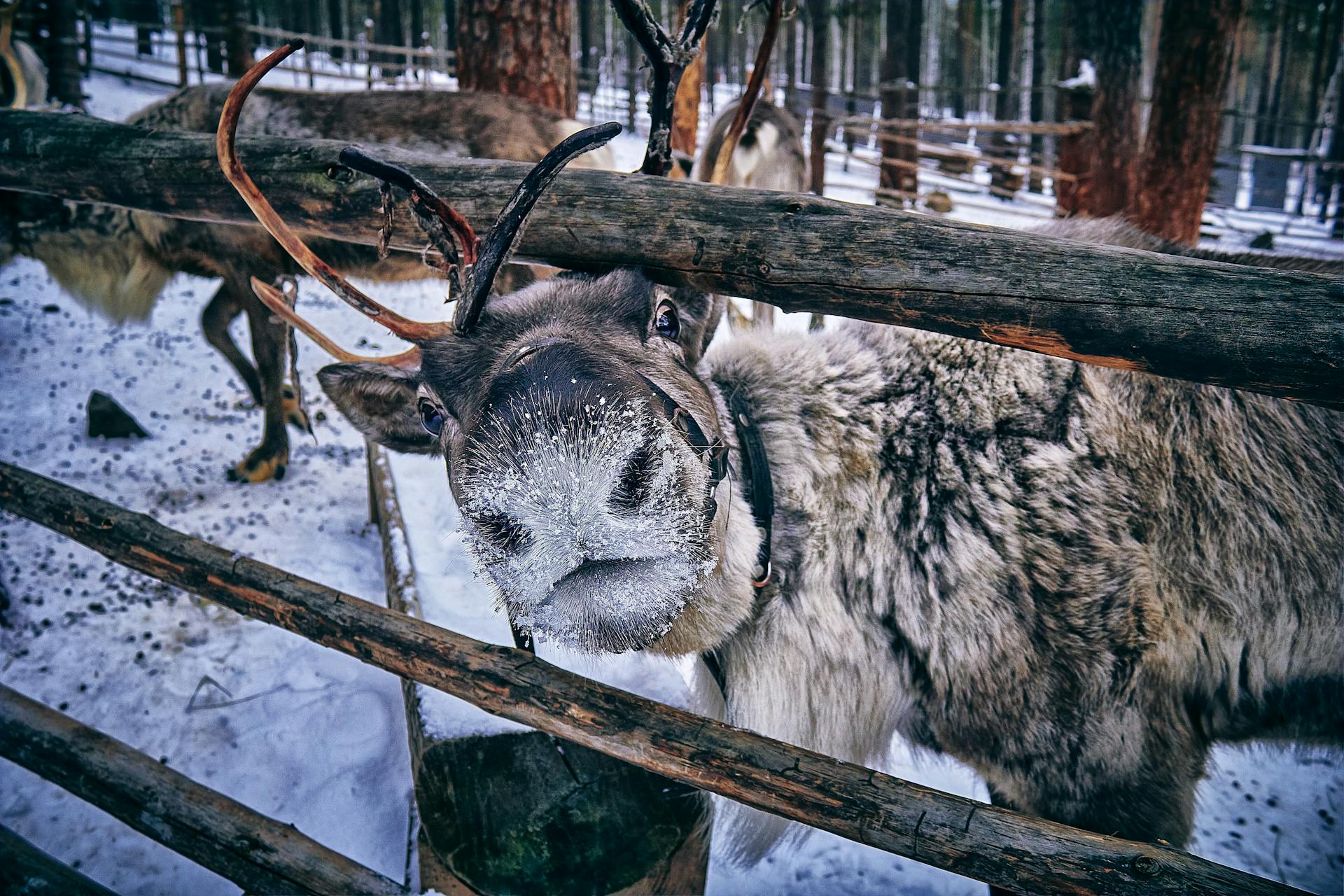
If you're considering bringing a new furry friend into your life, choosing the right breed is a crucial step. This decision should be based on your lifestyle, living situation, and personal preferences.
You might be wondering why you should get a dog in the first place. Getting a dog can bring numerous benefits, such as improved physical and mental health, increased social connections, and a sense of purpose.
Finding a responsible breeder is essential to ensure you're getting a healthy, well-socialized puppy. Look for breeders who prioritize the welfare of their dogs and are transparent about their breeding practices.
Getting started in dog sports can be a great way to bond with your dog and provide them with mental and physical stimulation. Whether you're interested in agility, obedience, or fetch, there's a dog sport out there for you.
All about puppies! If you're planning to bring home a new puppy, be prepared for a significant amount of time and effort to help them adjust to their new environment.
General Information
The Finnish Lapphund has a rich history, with its origins dating back to when the Sami of Northern Finland used them to guard and herd reindeer.
This breed has been recognized by the Finnish Kennel Club since 1945, initially as the Lappish Herder.
History
The Finnish Lapphund is an ancient breed that originated in Finland. They were developed by the Sami people, a semi-nomadic people who have inhabited the Lapland region for thousands of years.
The breed was originally used for herding reindeer, but they are now also popular as family pets. The first written records of the Finnish Lapphund date back to the 16th century.
Remains of dogs similar to the Finnish Lapphund have been found in archaeological sites dating back to 7000 BC. This suggests that the breed has a long and storied history.
The Finnish Lapphund was officially recognized by the Finnish Kennel Club in 1945. The breed was first introduced to the United States in the 1960s and has been gaining popularity ever since.
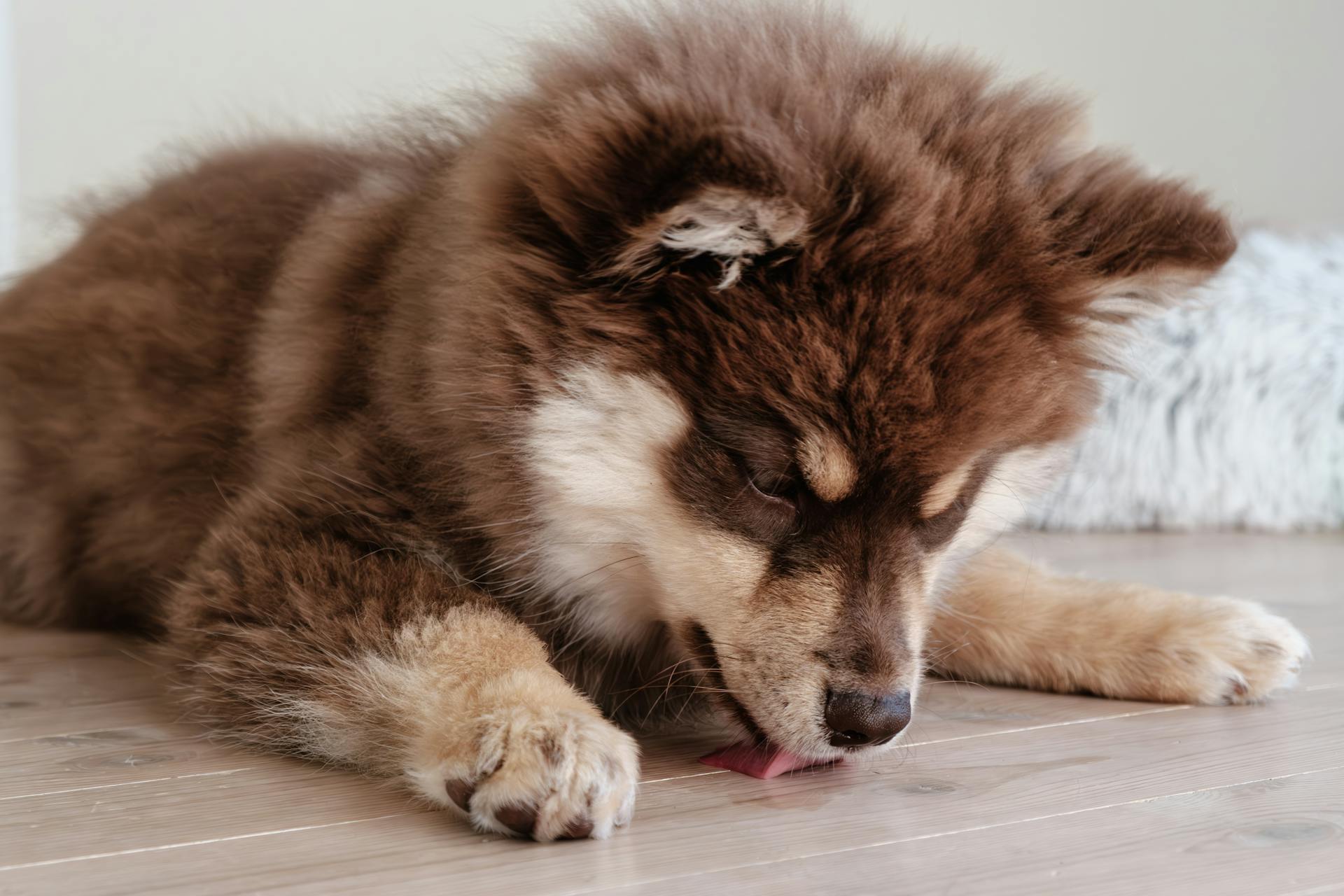
The breed comes from Lapland, an area spanning northern sections of Norway, Sweden, Finland, and parts of Russia. For centuries, the Finnish Lapphund was valuable for the indigenous Sami people as a hunter and herder of reindeer.
The breed transitioned to modern-day companions thanks to breeding efforts in the 1940s. The Finnish Kennel Club was established in 1945 to keep records of the Lapponian Shepherd Dog.
The breed separated into short-coated and long-coated varieties. The former became the Lapponian Herder, while the latter took the Finnish Lapphund name.
For centuries, the Sami of Northern Finland used dogs of this type to guard and herd reindeer. In 1945, the Finnish Kennel Club recognized the breed as the Lappish Herder, but in 1993, the breed gained its present title.
Pastoral Breed Group
The Pastoral Breed Group is made up of herding dogs that work with cattle, sheep, reindeer, and other cloven-footed animals.
These dogs typically have a weatherproof double coat to protect them from harsh conditions.
Some examples of breeds in this group include the Collie family, Old English Sheepdogs, and Samoyeds.
These breeds have been herding reindeer for centuries, showing their ability to adapt to challenging environments.
Their double coats help them withstand severe weather conditions, making them well-suited for their work.
Featured Images: pexels.com
